Sign up for our monthly Leap Update newsletter and announcements from the Leap Ambassadors Community:
By clicking "Stay Connected" you agree to the Privacy Policy
By clicking "Stay Connected" you agree to the Privacy Policy
Venture Philanthropy Partners
If you lived in Prince George’s County, Maryland, in the 1970s you probably had a chance to witness history in the making. That’s where a quiet kid named Ray Charles Leonard, named after his mother’s favorite singer, learned how to box at the Palmer Park Community Center, just a few miles from the DC-Maryland line. With a combination of wicked speed and power, he went on to earn the nickname “Sugar Ray,” win a Gold Medal at the 1976 Olympics, and take home world titles in five different weight classes.
If you lived in the county in the early 2000s, you probably saw another one-in-a-billion athlete emerge. NBA superstar Kevin Durant grew up in the community and honed his basketball talents on local asphalt and hardwood. And if you saw Durant grow into greatness during that time, you’re among the few who know that Durant wears the number 35 as a tribute to another native son, Charles “Big Chucky” Craig. In 2005, when Craig was a coach and father figure to Durant, he was gunned down at point-blank range in a strip-mall parking lot. Thirty-five is a reference to Craig’s age at the time of his death.
Craig’s murder was devastating to the 16-year-old Durant, whose own father was not part of his life at that time. Adding insult to tragedy, Craig’s death was treated as just another grim statistic in a community where murders and other violent crime were rising fast. The Washington Post gave the murder only 90 words.
Craig’s murder took place right in the middle of a profound, tumultuous transition for Prince George’s County, which hugs the eastern edges of the District of Columbia. In the 1990s, Prince George’s County was widely known for being the wealthiest majority-black county in the nation, and it had virtually no neighborhoods with concentrated poverty. But during the early 2000s, the county began to struggle with the spillover effects of rapid gentrification in DC. As well-to-do white families flocked into DC, tens of thousands of poor African American and Latino families migrated north and east into adjacent Prince George’s County. The county, long a gateway to prosperity for families of color, became a case study in the suburbanization of poverty.
When Venture Philanthropy Partners (VPP) launched in DC in 2000, the flow of poverty out of the city was just starting to become apparent. “VPP was founded to focus on the neediest children in our region,” says VPP CEO Carol Thompson Cole. “That meant working not just in the District but in Northern Virginia and the adjacent Maryland suburbs as well, especially Prince George’s County.”
The poverty rate in DC was significantly higher than that of Prince George’s County. But DC had a more robust infrastructure for helping poor families, including government services, nonprofit programs, and a public transportation system that made it easier for people to access social services. Prince George’s County didn’t.
However, VPP’s leaders struggled to find the right way to engage. Prince George’s County, new to concentrated poverty, just didn’t have many strong nonprofits seeking to grow—the kind of organizations that VPP was built to support.
VPP’s goal was to do whatever it took to support these leaders’ success—whether it was helping them find executive talent, strengthen their boards, identify additional funding prospects, advocate for supportive public policies, build performance-management systems, or improve their programs’ evidence base.
VPP was the brainchild of three DC-area entrepreneurs—Mario Morino, Mark Warner (now the senior U.S. Senator from Virginia), and Raul Fernandez—who believed that the venture-capital approaches that had helped them build successful tech companies could be adapted to help nonprofits increase the effectiveness of their work and expand their reach. They modeled VPP on an approach to building industry leaders pioneered by a growth-equity investment firm called General Atlantic (GA). GA was founded by Chuck Feeney, a legendary philanthropist who started life with little, made billions on duty-free shops, gave it all away, and now lives in a rental apartment in San Francisco.
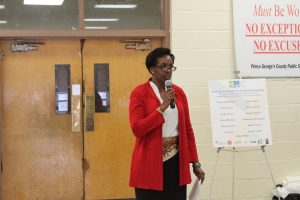
Like GA, the focus for VPP was on finding and supporting organizations that already had a good track record, strong leadership, and big aspirations. “As we saw the demographic shifts in the county, we attended countless meetings with government, business, and philanthropic leaders so we could be at the table to listen and learn. Unfortunately, we saw only startups and small organizations that weren’t ready to grow,” Thompson Cole says.
But VPP found a way to play a supporting role. With its first fund, a $32 million pool of resources comprised of gifts from VPP’s three founders and 26 other business leaders, VPP invested in five DC-based organizations that saw significant numbers of the children and families they served moving into Prince George’s County in search of more-affordable housing. VPP helped them follow these families and set up operations in the county.
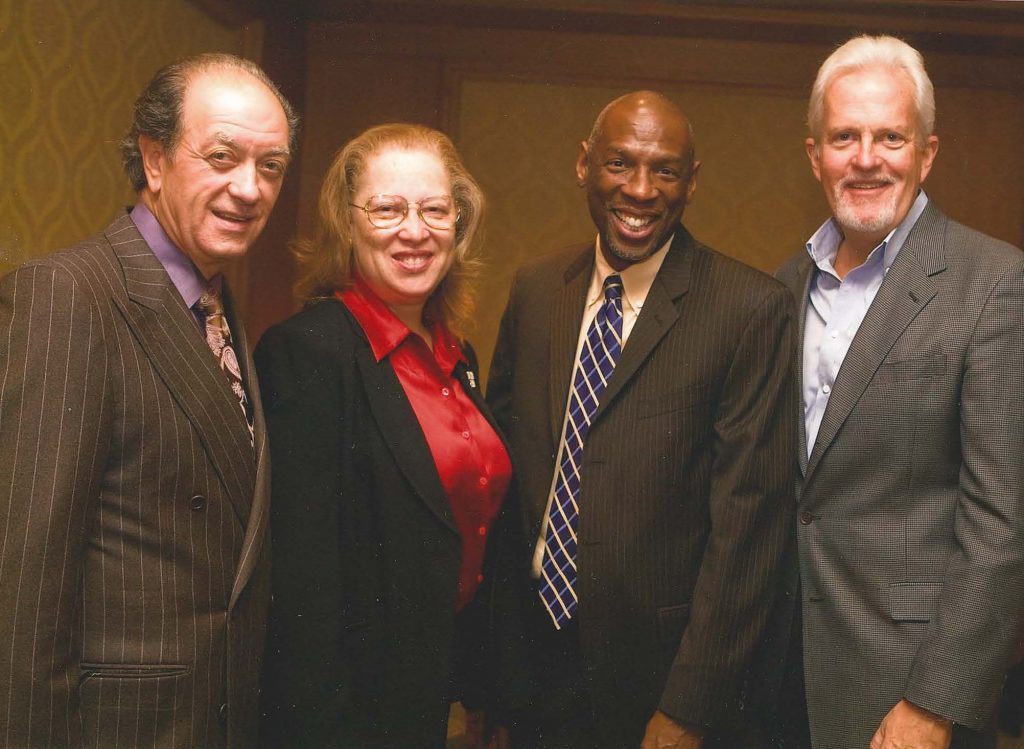
Each of these five organizations, as well as the seven other organizations VPP supported with its first fund, received a different kind of philanthropic support than they had found before. The support started with large planning grants. The grants allowed the nonprofits to engage in a months-long process, with facilitation from a top consulting firm and VPP’s active participation, to assess their strengths, identify areas needing improvement, and chart their future course. When the planning was complete, VPP offered multiyear, multimillion-dollar investments to help the organizations put those plans into action.
These big checks came with deep engagement. Members of VPP’s investment team sought to become trusted, on-demand resources to the nonprofit leaders. VPP’s goal was to do whatever it took to support these leaders’ success—whether it was helping them find executive talent, strengthen their boards, identify additional funding prospects, advocate for supportive public policies, build performance-management systems, or improve their programs’ evidence base. In addition, a senior executive associated with VPP took a seat on each grantee’s board.
According to internal assessments of the first fund’s investments, three of the 12 struggled, three had modest results, and six thrived. In those six cases, VPP built genuine trust and contributed to improved outcomes, more children served, and new areas of service in Prince George’s County and other areas with great needs. Here’s how these partners described the value of VPP’s engagement in confidential, anonymous interviews:
During the course of making its first 12 investments (2001-2006), VPP also learned that there were many ways in which it needed to improve its own performance.
What saved us in those years was our willingness to learn and adapt.
— Mario Morino
For example, VPP learned that it hadn’t done a good job of explaining its approach to its nonprofit partners. “The truth is, we’re high maintenance; we’re up in your business,” says Isaac Castillo, VPP’s director of outcomes, assessment, and learning and a resident of Prince George’s County. “We didn’t do enough to articulate why we think that kind of highly engaged support is helpful and worthwhile.” Today, VPP is much better at telling that story—and aligning expectations with its nonprofit partners up front.
VPP learned that its initial efforts had alienated potential funders as well as leaders in the communities it was serving. “I cringe when I look back at some of my speeches in those early years,” Morino acknowledges. “I came across as arrogant and too confident in our approach. The reality is that engaged approaches had been used by giants such as David Rockefeller long before I even knew the definition of the word philanthropy. What saved us in those years was our willingness to learn and adapt.”
VPP also learned that it had overvalued business experience and undervalued knowledge of community. VPP’s founders knew that context was important, given the region’s complex racial history, power dynamics, and suspicion of wealthy business leaders bearing gifts. But VPP learned the hard way that navigating these social and historical issues is every bit as crucial to the success of its investments as helping nonprofits strengthen their leadership and management.
To this end, Morino made a critical hire in 2003, bringing on Carol Thompson Cole, a respected senior executive with deep ties in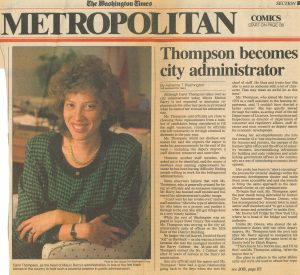 the DC community going back three generations. Her paternal grandfather and father were among the many African Americans who worked as butlers in the White House, and her grandmother was the First Lady’s seamstress. Thompson Cole followed their lead by going into public service, but in a very different capacity: She served as Senior Advisor to President Bill Clinton on the District of Columbia. “One of the proudest days in our family was the day I followed in our family’s tradition and walked through the White House’s imposing iron gates,” Thompson Cole shared with an audience of school leaders in 2011.
the DC community going back three generations. Her paternal grandfather and father were among the many African Americans who worked as butlers in the White House, and her grandmother was the First Lady’s seamstress. Thompson Cole followed their lead by going into public service, but in a very different capacity: She served as Senior Advisor to President Bill Clinton on the District of Columbia. “One of the proudest days in our family was the day I followed in our family’s tradition and walked through the White House’s imposing iron gates,” Thompson Cole shared with an audience of school leaders in 2011.
Thompson Cole also brought high-level experience in the private sector and in municipal government. After Mayor Marion Barry‘s drug arrest in 1990, she stepped in to run the city and, with her cool head and brilliant mind, kept the crisis from tearing the city apart.
Once Thompson Cole joined VPP, she quickly advanced to managing partner and then, in 2007, to president and CEO. “Carol is such a compelling leader,” Morino says. “She took what we started, improved on it, and adapted it to un-muddle very complex situations. She’s [unfazed] by the bullshit. She’s tough, disciplined, smart, caring, resourceful, and doesn’t quit.”
Thompson Cole used every staff opening as an opportunity to expand her team’s organization-building expertise and its ability to help grantees navigate the complex racial and cultural dynamics in the region. “Our board and other key players in the region watched as Carol raised the diversity and cultural competency of the team,” noted Dr. Michelle Gilliard, who came to VPP as a partner in 2013 after serving as senior director of the Walmart Foundation. Today, the VPP staff of 13 has seven African Americans, three Asian Americans, and one Latino. Thompson Cole adds, “As our team started to change and become more diverse and culturally competent, it was definitely noticed and appreciated in the community. We are the communities and families our partners are serving, and that makes it easier for us to build trusted relationships. That makes us more effective.”
Finally, VPP learned that its investments needed to create greater connective tissue in the region. Nonprofit partners like the Maya Angelou Public Charter School thrived beyond all expectations, transforming itself from one small school to a high-impact institution managing a multi-campus school system. However, all of the investments focused on single organizations rather than networks of nonprofits coordinating their services.
Armed with these findings, Morino, Thompson Cole, and the VPP staff began thinking about investing in integrated collaboratives in addition to individual organizations. They borrowed their guiding mantra from a famous African proverb: “If you want to go fast, go alone. If you want to go far, go together.” Their guiding question was: If VPP could establish the proper incentives and convene the right players, could a network of nonprofits achieve more together than they could as stand-alone organizations?
Thompson Cole picked the perfect time to start asking this question. Thanks to a successful advocacy campaign by a coalition of top nonprofit leaders, in the spring of 2009 the Congress passed and President Barack Obama signed into law the Edward M. Kennedy Serve America Act. Among its many provisions, the law created the Social Innovation Fund (SIF), a vehicle designed to “make grants to experienced grantmaking intermediaries that are well-positioned within communities to identify the most promising programs and guide them toward greater impact and stronger evidence of success.” Thompson Cole and her team saw VPP squarely in that definition—and imagined what major federal funding could do to advance VPP’s ability to align multiple nonprofits behind a shared mission for the kids they serve.
By giving up a certain amount of turf and individual identity, we’ll be able to make a dent in some of these big problems…. None of these organizations [could] solve it on their own.
— David Murphey, PhD
Child Trends
Thompson Cole went out on a limb to push this opportunity; this was her project, and she wasn’t going to fail. Members of the VPP team set up a special war room and pulled multiple all-nighters to draft their SIF proposal for a new collaborative initiative called youthCONNECT. The idea was to coalesce a network of six high-performance nonprofits and help them work together to improve education, employment, and healthy behaviors for 20,000 at-risk youth, including thousands in Prince George’s County. But even as the team was developing the proposal, the board was having significant doubts about applying for and committing to match government funds—especially in light of the onerous compliance requirements that come with federal grants, not to mention altering its identity to take on the new role of grantseeker rather than simply grantmaker. Working through those concerns was intense and stressful. When the war-room team was already deep into the application process, the board finally approved the matching funds.
In July 2010, SIF sent a bland, government-speak email to Thompson Cole’s team stating that VPP had won $10 million over five years, the maximum possible grant.
By the end of February 2011, VPP finalized the list of six organizations that would make up youthCONNECT initiative: Latin American Youth Center (also known as the Maryland Multicultural Youth Center), Year Up—National Capital Region, College Summit (now known as Peer Forward), Urban Alliance, KIPP DC, and Metro TeenAIDS (now integrated into Whitman-Walker Health). With backbone support from VPP and the respected evaluation firm Child Trends, the six organizations slowly built trust, a common outcomes framework, and an evaluation system for measuring outcomes. “By giving up a certain amount of turf and individual identity and thinking differently, [the organizations gave themselves a chance to solve] these big problems,” says Child Trends’ David Murphey. “Certainly, none of these organizations [could do so on its] own.”
Over five years, youthCONNECT invested a total of $32 million in the region. Evaluations of the initiative and the work of each of the six organizations show that the money was well spent. According to Child Trends, youthCONNECT achieved positive organization-level effects—allowing the six partners to expand the number of youth they serve (reaching 2,000 more young people than VPP promised in its SIF proposal), improve the way they collect and use data for learning, and strengthen their business operations.
Child Trends reports positive network-level outcomes as well. For example, the youthCONNECT partners created a true collaboration, not just a co-location of services, at a school for vulnerable, non-traditional students located in the incredibly diverse DC neighborhood of Columbia Heights. Together, five of the six organizations were able to provide the kind of holistic support—from health services to counseling with a peer component—that no single organization could offer.
Both types of effects—at the organization level and network level—helped produce student outcomes that surprised everyone involved. By 2015, 99 percent of the 12th graders served through youthCONNECT successfully completed high school, 92 percent applied for college, and 78 percent enrolled in post-secondary education.
As VPP’s federal grant came to an end in 2015, Thompson Cole and her team found the perfect way to build on youthCONNECT: use it as the core of a nonprofit delivery network for a major initiative in Prince George’s County focused on preparing young people for college and careers.
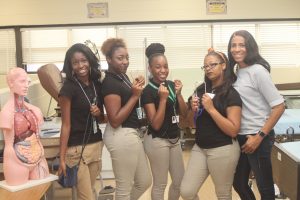
The initiative, known as Ready for Work, is now helping nearly 3,000 students a year, across three high schools: Suitland, Oxon Hill, and High Point. On average, a quarter of the students at these schools fail to graduate. And even among the graduates, too few are leaving school with the knowledge and skills they need to succeed in college or land good jobs.
VPP is providing the majority of the funding for the $15 million initiative. The Prince George’s County Public Schools and the Prince George’s County Council also have significant skin in the game (nearly $4 million in total), and its leaders are invested in its success.
Ready for Work is supporting the county’s education and workforce goals in three interconnected ways.
First, the nonprofits in the youthCONNECT network are combining forces to help high school students develop career goals; improve time management; understand work etiquette; earn industry-recognized credentials; and prepare for college, technical-education programs, and work. Nonprofits typically operate before school, after school, or over the weekend. But youthCONNECT’s high-performing nonprofits are working, with each school’s blessings, during the regular school day in addition to after school and weekends.
Second, Ready for Work is helping these students obtain paid internships with local employers, because evidence shows that students who gain meaningful work experiences have a much higher likelihood of getting and retaining meaningful jobs after graduation.
Third, Ready for Work is helping homegrown Prince George’s County nonprofits strengthen their performance with its Nonprofit Capacity Building Initiative. Ready for Work doesn’t want to rely exclusively on nonprofits that got their start in DC; it wants to build the bench of local organizations with the leadership, management, and programs to meet local needs.
Thompson Cole and her team took more than a decade to cultivate the relationships that make Ready for Work possible. “Carol invested time, dating back to 2005, to learn the players in government, public schools, nonprofits, and businesses in Prince George’s County,” Morino says. “Without this type of quiet, behind-the-scenes leadership, relationship building, and trust development, nothing can evolve or certainly sustain. Carol, Michelle [Gilliard], and the rest of the team took the time to build those relationships, and then they moved when the time was right.”
The time was right, in part, because youthCONNECT and its partners had shown leaders in the county that VPP deserved to be considered friends not foes. “They proved that they were not just another top-down funder,” says Dr. Kristine Andrews, part of the Child Trends team evaluating the youthCONNECT and Ready for Work initiatives in real time. “They were on the ground, in the schools, meeting with the youth—not just talking to top administrators.” Another key factor was the leadership of County Executive Rushern Baker III. “It wouldn’t have happened if Rushern Baker hadn’t been so excited to bring VPP and Ready for Work to Prince George’s,” Andrews says.
Thompson Cole had little trouble building rapport with Baker, despite very different leadership styles. Baker, by his own admission, can be headstrong. And Thompson Cole, by her own admission, can be the opposite: deliberative to a fault. But, according to Brad Seamon, Baker’s former Chief Administrative Officer and a VPP board member, Baker had developed a deep respect for Thompson Cole during her time steadying the DC government. “When we told Rushern Baker we were interested in expanding our work in Prince George’s County, he invited us in,” says Thompson Cole. “Ready for Work fit well with his priorities for the neediest neighborhoods.”
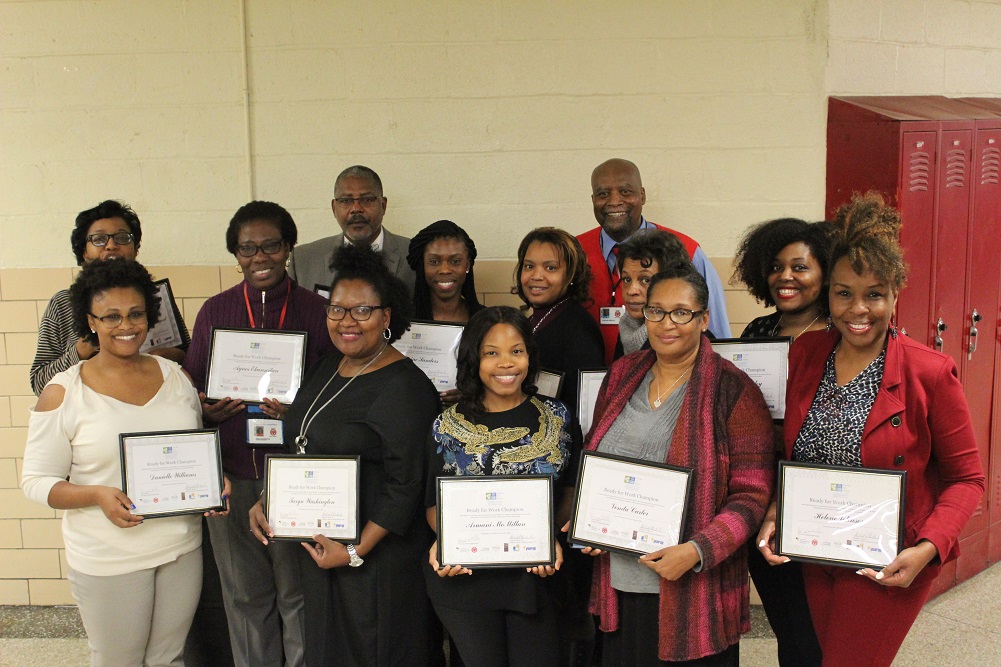
Based on its five years of youthCONNECT work, the VPP team knew that it needed to provide the backbone for the collaboration. As Morino puts it, “One of the fallacies of collaborative thinking is the whole is greater than the sum of the parts. The truth is the whole is greater only when the core parts are high-performing organizations and they’re being coordinated by a high-performance backbone organization.”
Early on people thought of VPP as a DC organization. But now they’re so embedded in the county and the schools, no one sees them as ‘other’ or an outsider.
— Kristine Andrews, PhD
Child Trends
Thompson Cole had a team member with the organization-building experience to move Ready for Work from design to implementation and manage the backbone operation: Dr. Michelle Gilliard. Thompson Cole and Gilliard worked with the leadership at Suitland High School to adapt the youthCONNECT model and embed a VPP representative in the school full time. For that critical in-school role, they hired Sterlind Burke, a recently retired high school principal with four decades of experience who had raised and educated his own children in Prince George’s County.
While many school leaders were supportive of Ready for Work from the beginning, some inevitably were skeptical. Burke has managed to convert the skeptics to champions. “I have done the hard work that they do and respect everything about their jobs and the pressures they are under,” he says. “That’s allowed me to become a valued thought partner for the principal, some of the assistant principals, and many of the teachers.” Interviews with all the major school stakeholders confirm Burke’s view. “VPP is seen as ‘us’ at this point, not ‘them,’” says Child Trends’ Andrews. “Early on people thought of VPP as a DC organization. But now [VPP’s] so embedded in the county and the schools, no one sees them as ‘other’ or an outsider.”
Even with Gilliard and Burke dedicating much of their time to Ready for Work, the VPP team has found that managing all the moving parts in Prince George’s County is even more complex than it expected. According to Castillo, “Investments are relatively simple if it’s just a VPP-to-nonprofit interaction. There’s a limited set of things that can go wrong. But when it’s VPP plus five nonprofits and multiple government entities, that’s a different matter. It’s exponentially more complex.”
In 2017, VPP hired Telaekah Brooks to help strengthen and deepen VPP’s relationships with county officials and business leaders. Brooks, a former college dean, had helped start hundreds of for-profit and nonprofit organizations in her role as founding executive director of the Georgia Avenue Business Resource Center. Her affinity for VPP’s work is directly tied to perhaps the most important role in her life: raising two foster daughters.
What does managing this complexity look like on the ground? For one thing, it takes working with all the key players to develop common goals and collect common data. “Carol, Michelle, and the VPP team did a masterful job bringing everyone together to develop a common outcomes framework,” Morino says. “Best of all, they maintained very high standards, never allowing the group to give into lowest-common-denominator thinking.”
Another good example comes from Brooks’s work to create alignment between what students learn in the classroom and what they do during their summer work placements. Brooks has facilitated numerous discussions among teachers, principals, and school-system administrators—and she’s brought these school leaders together with local employers, such as Kaiser Permanente.
Simultaneously, Castillo has worked with VPP’s nonprofit partners and the Prince George’s County Public Schools to work out arrangements that allow all partners to gain access to, and learn from, student-level data. Earlier struggles with youthCONNECT made him more effective this time around. “With youthCONNECT, I didn’t do a good job at first of establishing trust with one partner in particular,” he acknowledges. “But I think it was a session where I brought together all the evaluation leads from each organization that helped turn things around. When that partner heard from all the other leads and heard all the cool ways they were going to use the data to fuel improvements, that turned on a lightbulb. Things have been much smoother since.”
Investments are relatively simple if it’s just a VPP-to-nonprofit interaction…. But when it’s VPP plus five nonprofits and multiple government entities … it’s exponentially more complex.
— Isaac Castillo
Director of Outcomes, Learning, and Assessment
Venture Philanthropy Partners
By all accounts, many challenges remain for all of the Ready for Work partners. The school system has recently faced significant leadership changes. “Turnover among elected officials and school principals has meant two steps forward and one step back at times,” Andrews reports. “You have to get people up to speed all over again and build new relationships. You have to explain all over again why you’re doing the work, why you need evaluations, why you need permission for seeing student-level data.”
Another big challenge is funding. VPP has managed to attract significant commitments from the Peterson Family Foundation, Kaiser Permanente, and the Washington Redskins Charitable Foundation. But one Ready for Work nonprofit recently found out that its largest donor is scaling back dramatically for reasons that have nothing to do with the nonprofit’s performance.
Despite these challenges, Ready for Work is already hitting the mark on many of the outputs and outcomes it established. In terms of outputs, in its pilot year (the 2015-16 school year) Ready for Work served a total of 795 students. At the end of the 2017-18 school year, it was serving nearly twice as many.
Ready for Work tracks outcomes at two different levels: at the school level and at the student level. During its first few years, Ready for Work has seen meaningful school-level outcomes, such as improved 11th grade promotion rates and improved high school graduation rates. (Ready for Work was not the sole driver of these positive results, but the program did contribute.) Student-level outcome data, released in raw form just as this profile was going to publication, is being analyzed by VPP. VPP will examine whether Ready for Work participants have different academic, employment, and behavioral outcomes when compared to students not participating in Ready for Work programming.
If VPP finds that Ready for Work is making real progress, the program could be a model for the state. Thanks to the findings of a high-level commission convened by the governor, “This state is in the process of potentially committing hundreds of millions of dollars throughout the state to do exactly what the Ready for Work initiative is seeking to do at Suitland High School, Oxon Hill High School, and High Point High School,” Burke says.
Like so many of the young people its nonprofit partners serve, VPP has grown and matured in its first 18 years. VPP still has the same entrepreneurial DNA, but DNA has not been destiny. VPP’s executives and board have shown a true “growth mindset” that has enabled the organization to learn, adapt, and improve.
With time and experience, VPP has gotten better at identifying nonprofit leaders best positioned to benefit from the organization’s highly engaged support. It’s gotten more sophisticated at helping leaders strengthen their core organizational muscles—from board engagement to fund development to performance management. And most of all, it’s learned how to move beyond single investments to coordinating collective investments that engage multiple nonprofits, governments, and local businesses.
VPP isn’t resting on its laurels. Thompson Cole and the VPP board know full well that every community in which it works still has gaping needs. But they also know, based on thoughtful evaluations, that VPP is improving lives and building new bonds of trust in the region. At a time when our Nation’s Capital is often held up as a model of dysfunction, VPP and its many community partners are providing a model of high function and high performance.
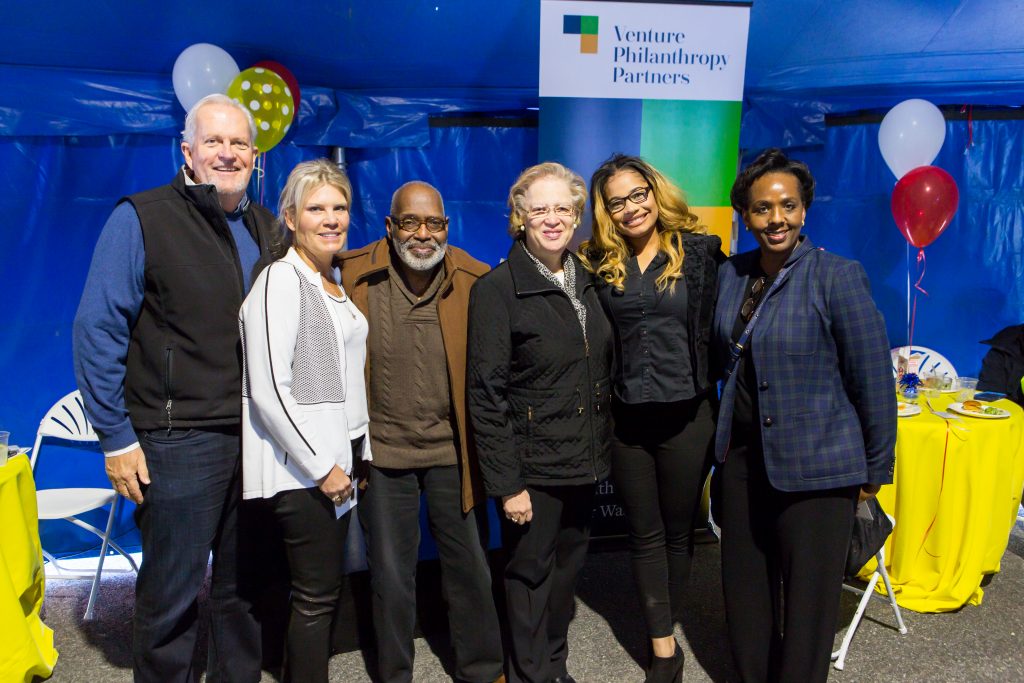
Do you want to learn more about how donors and grantees can work together to enhance their effectiveness? Read about Funding Performance here, and let us know your thoughts.
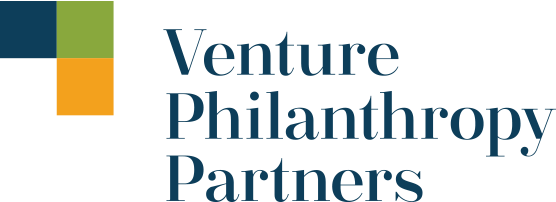
Venture Philanthropy Partners
Mission: To lead positive systemic change that builds a better future for vulnerable youth in Greater Washington.
Location: Greater Washington, DC
Staff: 13
Average grant size: $2.66 million
This document, developed collaboratively by the Leap of Reason Ambassadors Community (LAC), is licensed under a Creative Commons Attribution-NoDerivatives 4.0 International License. We encourage and grant permission for the distribution and reproduction of copies of this material in its entirety (with original attribution). Please refer to the Creative Commons link for license terms for unmodified use of LAC documents.
Because we recognize, however that certain situations call for modified uses (adaptations or derivatives), we offer permissions beyond the scope of this license (the “CC Plus Permissions”). The CC Plus Permissions are defined as follows:
You may adapt or make derivatives (e.g., remixes, excerpts, or translations) of this document, so long as they do not, in the reasonable discretion of the Leap of Reason Ambassadors Community, alter or misconstrue the document’s meaning or intent. The adapted or derivative work is to be licensed under a Creative Commons Attribution-NoDerivatives 4.0 International License, conveyed at no cost (or the cost of reproduction,) and used in a manner consistent with the purpose of the Leap of Reason Ambassadors Community, with the integrity and quality of the original material to be maintained, and its use to not adversely reflect on the reputation of the Leap of Reason Ambassadors Community.
Attribution is to be in the following formats:
“From ‘Network Effect: A Profile of Venture Philanthropy Partners,’ developed collaboratively by the Leap of Reason Ambassadors Community, licensed under CC BY ND https://creativecommons.org/licenses/by-nd/4.0/“
The above is consistent with Creative Commons License restrictions that require “appropriate credit” be required and the “name of the creator and attribution parties, a copyright notice, a license notice, a disclaimer notice and a link to the original material” be included.
The Leap of Reason Ambassadors Community may revoke the additional permissions described above at any time. For questions about copyright issues or special requests for use beyond the scope of this license, please email us at info@leapambassadors.org.
We use cookies for a number of reasons, such as keeping our site reliable and secure, personalising content and providing social media features and to analyse how our site is used.
Accept & Continue